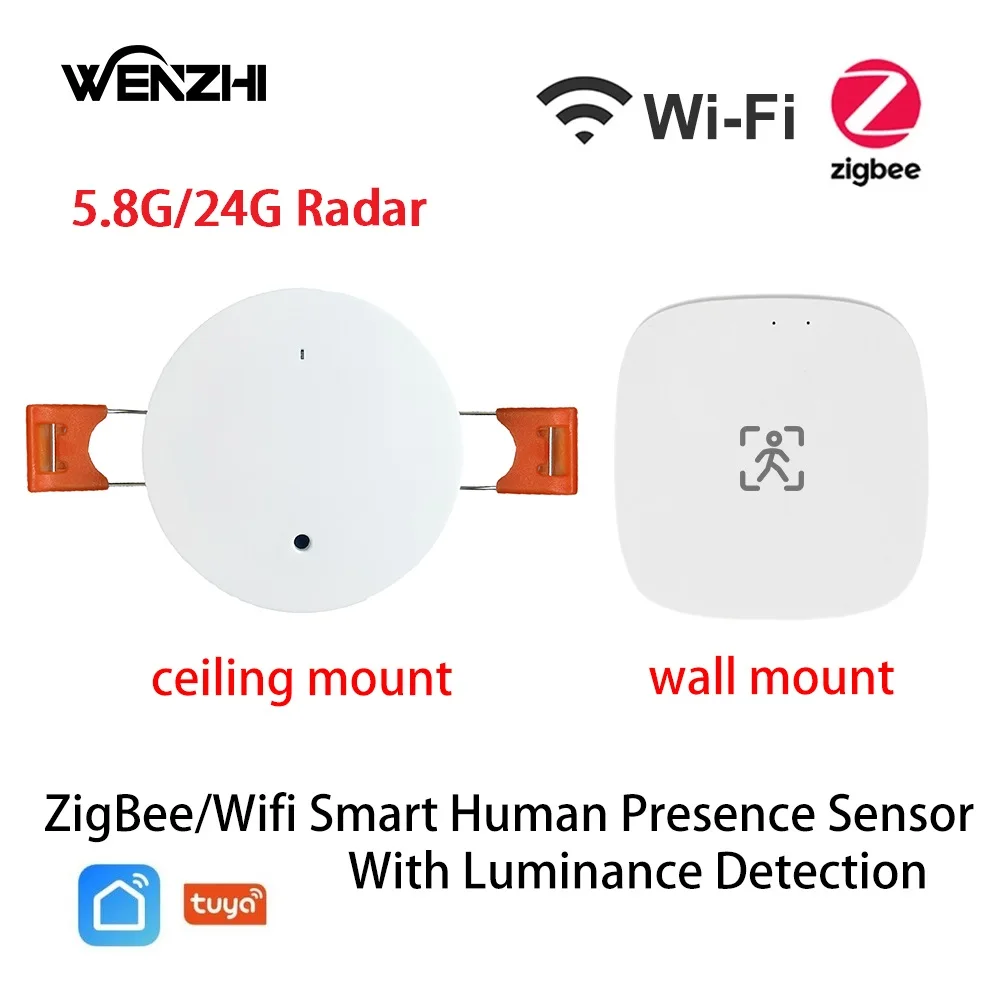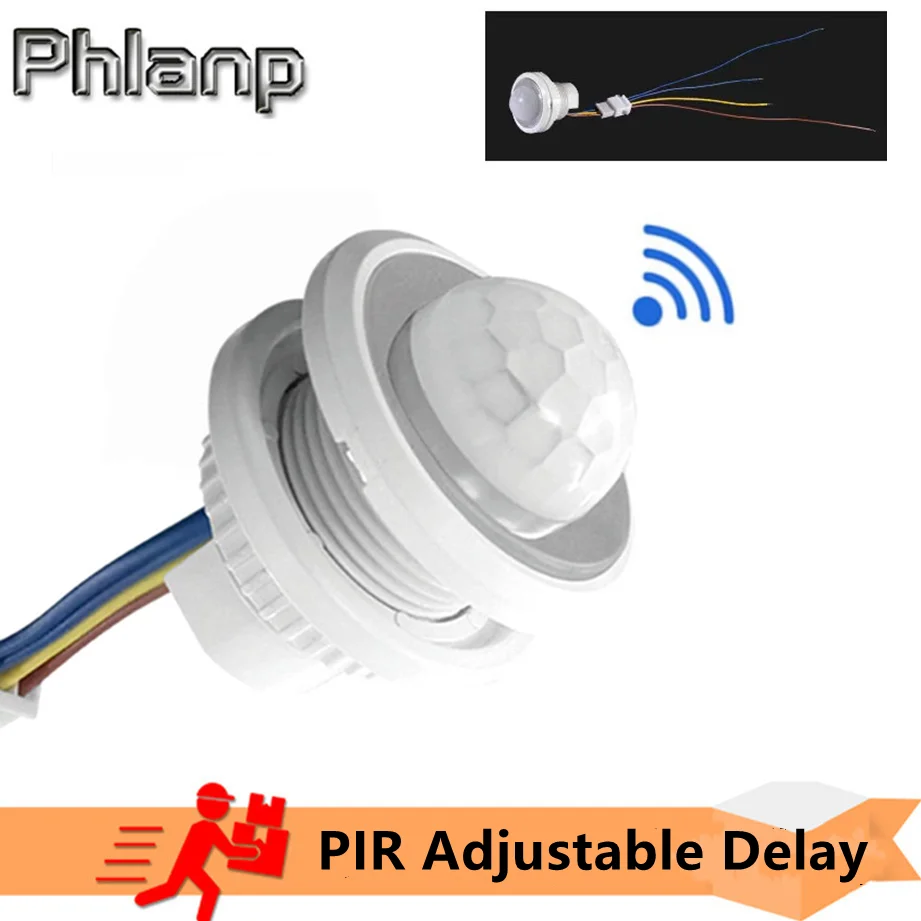
Unlock the Power of Smart Home Automation: Comparing the Top 2 Motion Sensors – Tuya Smart Life Motion Sensor vs. Generic PIR Motion Sensor!
-
By Eumenes
- on
- under Etc
Table of Contents
Introduction: Why Motion Sensors Matter in Smart Homes
Have you ever wondered how to kick your smart home setup up a notch? 🤔 One of the must-have components in any modern smart home system is the motion sensor! These nifty little devices not only enhance security but also optimize lighting and energy usage throughout your house. Living in a bustling household, I experienced the daily annoyance of having to walk into a room, only to be greeted by darkness. I knew there had to be a smarter way! After diving into research and countless reviews, I’ve narrowed down the contenders for the best motion sensors: the Tuya Smart Life Motion Sensor and the Generic PIR Motion Sensor. In this article, we’ll explore their features, user experiences, and which might be the best fit for your home automation needs. 🏡✨
Imagine walking into your living room and voilà! The lights turn on instantly as you enter, thanks to an intelligent motion sensor. No more fumbling for switches or shouting for assistance—it’s a touch of magic that makes life just a bit easier. Plus, it’s great for saving energy! Why keep lights on in empty rooms, right? Let’s break down how these two sensors stand up in the real world!
Feature Showdown: Tuya Smart Life Motion Sensor vs. Generic PIR Motion Sensor
When evaluating motion sensors for your smart home, the features can make all the difference. Here’s a comparative overview highlighting essential functions that could sway your decision.
| Feature | Tuya Smart Life Motion Sensor | Generic PIR Motion Sensor |
|---|---|---|
| Power Supply | 5/110/220V | AC 85V-265V |
| Installation Type | Home Automation | LED Embedded |
| Detection Range | Adjustable | Up to 12 meters |
| Compatibility | Smart Life App, ZigBee | Most Standard Lights |
| Average Price | $120+ | $2-$5 |
Comparing both products, the Tuya Smart Life Motion Sensor positions itself as a premium product with advanced features aimed at tech-savvy users, while the Generic PIR Motion Sensor caters to folks looking for a cost-effective lighting solution. Let’s get into a more detailed look into each product!
In-Depth Analysis: Tuya Smart Life Motion Sensor
The Tuya Smart Life Motion Sensor is designed to seamlessly integrate with your existing smart home ecosystem. Once you connect it to your home automation system, it detects human presence and can trigger actions like lighting or alerts. This device can communicate via ZigBee, which allows for a more stable and energy-efficient connection compared to traditional Wi-Fi devices.
- Key Features:
- ✅ ZigBee-compatible for smooth connectivity
- ✅ Adjustable sensitivity and detection zones
- ✅ Integration with Smart Life app for easy control
- ✅ Versatile installation options for various environments
However, like any product, it has its downsides. Here are some things to consider:
- ❌ Higher price point compared to similar products
- ❌ Some users report occasional connectivity issues
| Characteristic | Details |
|---|---|
| Detection Technology | MmWave |
| Max Range | Adjustable |
| Feedback | Generally positive with some connectivity issues |
Considering its advanced features and the flexibility it offers, it’s a fantastic option for those willing to invest a little more in their home’s automation. If you’re interested, check out this in-depth review of Tuya Smart Life Motion Sensor for more insights!

In-Depth Analysis: Generic PIR Motion Sensor
On the flip side, the Generic PIR Motion Sensor offers a budget-friendly solution without sacrificing effectiveness. It’s an infrared sensor that detects movements based on heat signatures. It’s straightforward to install and is perfect for everyday lighting setups.
- Key Features:
- ✅ Cost-effective (usually around $2-$5)
- ✅ Easy installation suitable for casual users
- ✅ Adjustable delay settings (5 seconds to several minutes)
However, it does come with its limitations that you should consider:
- ❌ Less advanced than premium options, with limited features
- ❌ May have sensitivity and accuracy issues in bright settings
| Characteristic | Details |
|---|---|
| Technology | PIR Infrared |
| Max Range | Up to 12 meters |
| Feedback | Generally positive, straightforward usage |
This sensor might not come packed with fancy tech, but it’s a solid investment for anyone just looking for basic motion-detecting capabilities for lighting. For a detailed perspective, you can also read the Generic PIR Motion Sensor review which provides further insights.

User Experiences: What Do Real Customers Say?
The best way to choose between these two sensors is to consider real-world experiences. Users often rave about the Tuya Smart Life Motion Sensor for its sleek design and effective performance, especially when paired with smart home ecosystems like ZigBee. However, some users have pointed out occasional connectivity hurdles. One user claimed it works flawlessly with their Home Assistant but noted that configuration wasn’t as seamless as expected.
In contrast, many customers adore the Generic PIR Motion Sensor for its straightforwardness. It’s praised for quick installations, ideal for anyone who wants a simple fix without fuss. One user happily reported that it had been tracking movements accurately for years, surviving various environmental challenges. However, some have raised concerns regarding its inconsistency of working during daylight.
Overall, user feedback suggests both devices have their merits, making them suitable for different audiences and needs.
Conclusion: Finding the Right Fit for Your Needs
Choosing between the Tuya Smart Life Motion Sensor and the Generic PIR Motion Sensor ultimately comes down to your personal needs, budget, and existing smart home setup. If you’re looking for a device that integrates smoothly into an advanced smart ecosystem and don’t mind investing a bit more cash, the Tuya sensor is an excellent choice. Its adaptability and advanced technology warrant this choice despite some connectivity issues that a few users experience.
On the flip side, if you’re a budget-conscious homeowner or just want a straightforward motion sensor to manage lighting, then the Generic PIR sensor might be your best buddy! It’s effective for basic needs and won’t break the bank. Plus, if you’re not relying on tech-heavy integrations, it simplifies the experience.
In conclusion, both sensors have their strengths and weaknesses. Take a moment to evaluate your circumstances, and you’ll surely pinpoint the ideal product for your smart home automation needs! Whether it’s ease of use you’re after, or comprehensive smart integration, you’ve got solid options ahead.
Table of Contents
Table of Contents
Trending Posts

Eumenes
Explore Product Reviews
2025 Affordable aliexpress Tesla Model Y3 Door Handle Protective Cover Review
SOYO AMD Radeon RX550 Review: Is This Affordable GPU Worth Your Money?
JUHOR DDR5 RAM Review: Unlocking Speed and Efficiency for Your Computer!
2025 Best Value FITMPH EV Charger Plug Review on aliexpress
2025 Best LED Chip 10W 20W 30W 50W COB Chip LED Lamp Review on aliexpress
Explore Our Blog
Discover the Top 4 Computer Cleaners for Excellent Value for Money!
-
Posted by
Eumenes
2025 aliexpress Innovative Car Gear and Dash Accessories for a Modern Ride
-
Posted by
Benjamin King
Exploring the Best Innovative Electronic Toys for Kids: A Look at the Most Exciting Options!
-
Posted by
Eumenes
2025 aliexpress Top Smart Tracker Accessories to Keep Your Valuables Secure
-
Posted by
Ella Hughes
Top 3 Essential Cameras and Accessories for Kids: Unleash Fun with Photography Tools!
-
Posted by
Eumenes
2025 aliexpress Cool Projector Night Lights to Transform Your Space
-
Posted by
Mason Gray
2025 aliexpress Best Car Phone Mounts for On-the-Go Navigation & Safety
-
Posted by
Benjamin King
2025 aliexpress Modern LED Neon Accents & Indicator Lights for Stylish Decor
-
Posted by
Ethan White
2025 aliexpress Wireless CarPlay & Android Auto Adapters for a Smart Ride: Expert Reviews
-
Posted by
Sarah Coleman
2025 aliexpress Premium Oxygen and Lambda Sensors for Enhanced Engine Efficiency
-
Posted by
Matthew Rivera
2025 aliexpress Best LED Headlamps for Hiking, Camping, and Work in 2023
-
Posted by
Eumenes


































